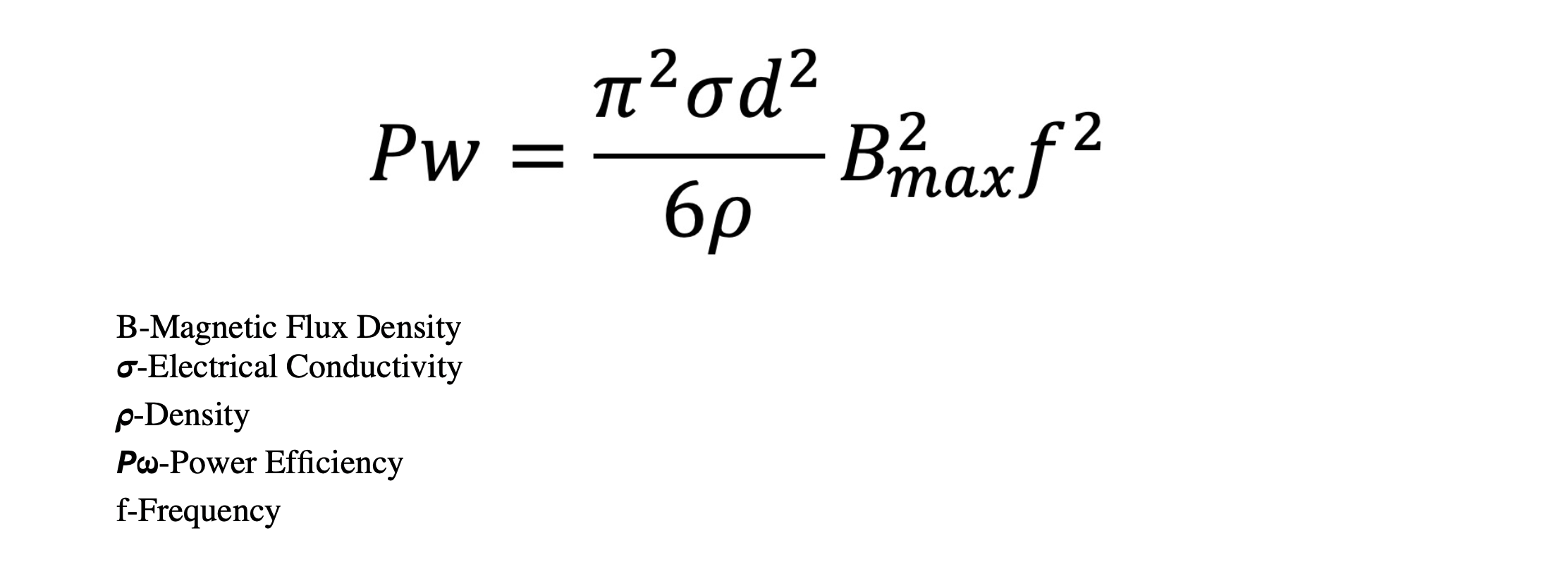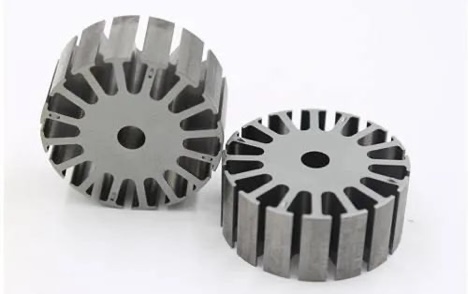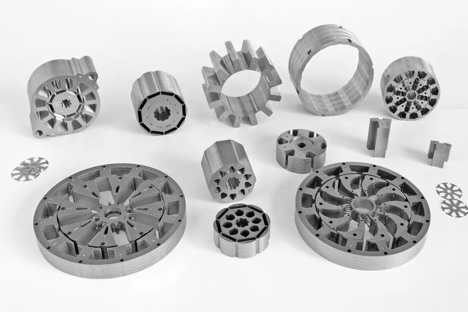It is well known that the stator and rotor core material significantly impacts the electrical machine’s output, heat dissipation, weight, and cost characteristics. The term “electrical machine” here broadly refers to motors, generators, tachometers, rotary transformers, alternators, etc. Selecting the core material for the rotor or stator laminations has fundamental and far-reaching implications for electrical machine design.
First and foremost, it must be clarified that no single material is optimal or universally available for every application. A trade-off must be struck among multiple factors such as cost, weight, size, etc. Additionally, the processing of laminations after manufacturing significantly affects the designed core’s performance.
A criteria matrix for material selection should include cost, permeability, electromagnetic losses, and saturation flux density. Electromagnetic losses and permeability vary with the frequency of magnetic flux reversal (measured in Hz) and magnetic flux density. In some applications, the shape of the hysteresis curve becomes crucial. Each available material is optimized for one or more of these factors while being less than perfect in other areas.
What considerations should guide the choice of proper steel? Currently, the most commonly used material for motor cores is cold-rolled laminated steel. This material is the lowest-cost option for mass applications because it is easy to stamp and has low tool wear, which helps reduce the cost of finished laminations. Carbon steel is suitable for applications where relatively high core losses, such as low-duty cycles, and low-cost equipment are acceptable. Of course, the magnetic and mechanical properties of the material are key determining factors.
Thinner materials result in lower high-frequency eddy current losses, thereby improving motor efficiency. This, in turn, means lower power consumption, allowing for longer transmission distances with the same electrical capacity. According to the power formulas below, thinner materials are preferable:

However, how does thinner steel sheet affect production times and capacity? Stamping speeds generally vary between 220 strokes per minute for 0.25mm-thick sheets and 250 strokes per minute for 0.35mm sheets, depending on sheet thickness. Thinner sheets require more laminations to stack to the desired total height. For example, for a motor stator core with a total stacking height of 120mm, production volume ranges from 32 stacks per hour with 0.35mm sheets to only 19 stacks per hour with 0.25mm sheets. This indicates the stamping time increases by 1.7 times.
High-power electric motors can be produced using various grades of steel. When selecting a driving motor for a purely electric vehicle, the primary consideration is how much cost can be saved by using higher-quality, thinner, and more expensive electrical steel. Even relatively small differences in efficiency can affect the battery’s range and the required battery capacity.
For motors used to support internal combustion engines in mild hybrid vehicles or in purely electric modes over short or medium distances, such as in hybrid or plug-in hybrid vehicles, the performance standards are lower. In such cases, reducing motor efficiency in the thickness range of 0.3 to 0.35mm is more practical.


Extremely thin core steel can improve the efficiency of high-speed motors, particularly in the stator. However, in the rotor, very high strength is often more critical than thinness. Special combination techniques, such as full-surface bonding, can also positively impact rotor efficiency.
In conclusion, thinner material is not always the top priority. A comprehensive analysis is essential when designing a motor. Factors such as manufacturability, cost, application requirements, efficiency, and other technical considerations must all be taken into account. It is crucial to evaluate the use of core steel from multiple perspectives. For more motor inquire, contact Quadrant now.
